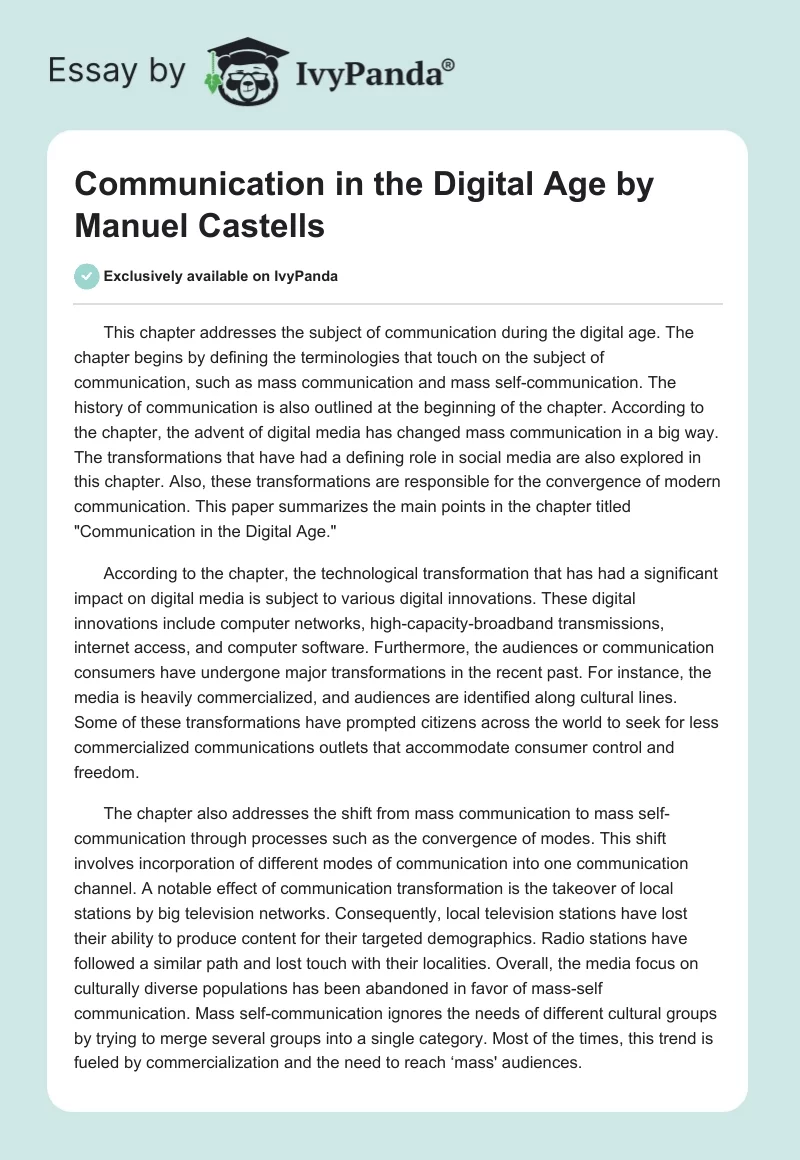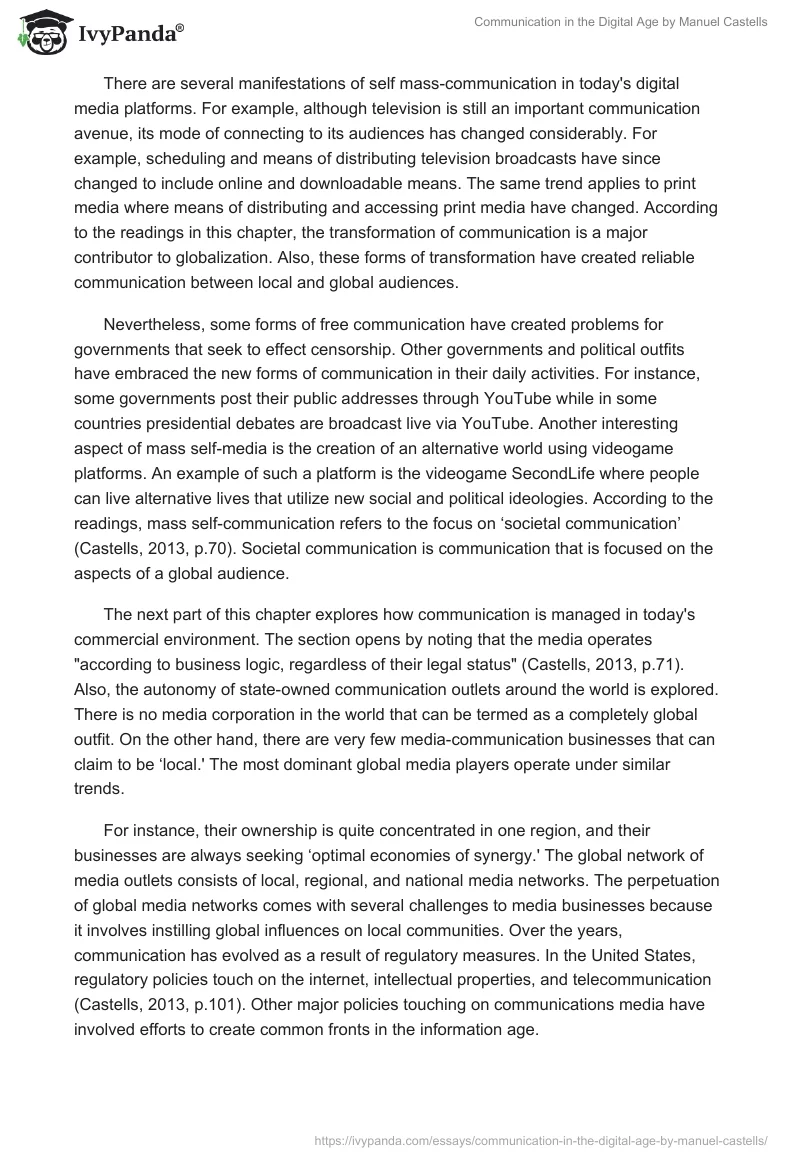This chapter addresses the subject of communication during the digital age. The chapter begins by defining the terminologies that touch on the subject of communication, such as mass communication and mass self-communication. The history of communication is also outlined at the beginning of the chapter. According to the chapter, the advent of digital media has changed mass communication in a big way. The transformations that have had a defining role in social media are also explored in this chapter. Also, these transformations are responsible for the convergence of modern communication. This paper summarizes the main points in the chapter titled “Communication in the Digital Age.”
According to the chapter, the technological transformation that has had a significant impact on digital media is subject to various digital innovations. These digital innovations include computer networks, high-capacity-broadband transmissions, internet access, and computer software. Furthermore, the audiences or communication consumers have undergone major transformations in the recent past. For instance, the media is heavily commercialized, and audiences are identified along cultural lines. Some of these transformations have prompted citizens across the world to seek for less commercialized communications outlets that accommodate consumer control and freedom.
The chapter also addresses the shift from mass communication to mass self-communication through processes such as the convergence of modes. This shift involves incorporation of different modes of communication into one communication channel. A notable effect of communication transformation is the takeover of local stations by big television networks. Consequently, local television stations have lost their ability to produce content for their targeted demographics. Radio stations have followed a similar path and lost touch with their localities. Overall, the media focus on culturally diverse populations has been abandoned in favor of mass-self communication. Mass self-communication ignores the needs of different cultural groups by trying to merge several groups into a single category. Most of the times, this trend is fueled by commercialization and the need to reach ‘mass’ audiences.
There are several manifestations of self mass-communication in today’s digital media platforms. For example, although television is still an important communication avenue, its mode of connecting to its audiences has changed considerably. For example, scheduling and means of distributing television broadcasts have since changed to include online and downloadable means. The same trend applies to print media where means of distributing and accessing print media have changed. According to the readings in this chapter, the transformation of communication is a major contributor to globalization. Also, these forms of transformation have created reliable communication between local and global audiences.
Nevertheless, some forms of free communication have created problems for governments that seek to effect censorship. Other governments and political outfits have embraced the new forms of communication in their daily activities. For instance, some governments post their public addresses through YouTube while in some countries presidential debates are broadcast live via YouTube. Another interesting aspect of mass self-media is the creation of an alternative world using videogame platforms. An example of such a platform is the videogame SecondLife where people can live alternative lives that utilize new social and political ideologies. According to the readings, mass self-communication refers to the focus on ‘societal communication’ (Castells, 2013, p.70). Societal communication is communication that is focused on the aspects of a global audience.
The next part of this chapter explores how communication is managed in today’s commercial environment. The section opens by noting that the media operates “according to business logic, regardless of their legal status” (Castells, 2013, p.71). Also, the autonomy of state-owned communication outlets around the world is explored. There is no media corporation in the world that can be termed as a completely global outfit. On the other hand, there are very few media-communication businesses that can claim to be ‘local.’ The most dominant global media players operate under similar trends.
For instance, their ownership is quite concentrated in one region, and their businesses are always seeking ‘optimal economies of synergy.’ The global network of media outlets consists of local, regional, and national media networks. The perpetuation of global media networks comes with several challenges to media businesses because it involves instilling global influences on local communities. Over the years, communication has evolved as a result of regulatory measures. In the United States, regulatory policies touch on the internet, intellectual properties, and telecommunication (Castells, 2013, p.101). Other major policies touching on communications media have involved efforts to create common fronts in the information age.
This chapter addresses the dynamics of communicative practices, including digital media, mass communication, and globalization. According to the article, the interactive capacity of new media accommodates a new form of communication known as mass self-communication. The article also asserts that different communication organizations operate under different global cultural dimensions. Therefore, the communications industry is shaped by both cultural influences and globalization. The media business is constantly under the strain of conforming to either individualism or communism. To achieve global presence, media businesses use any technological tools in their disposition. Global communication is likely to continue operating in a culturally diverse environment. Moreover, societal communication will continue to be used in a bid to accommodate culturally diverse audiences.
Reference
Castells, M. (2013). Communication power. Communication in the Digital Age (pp. 54-102). Oxford, United Kingdom: Oxford University Press.


